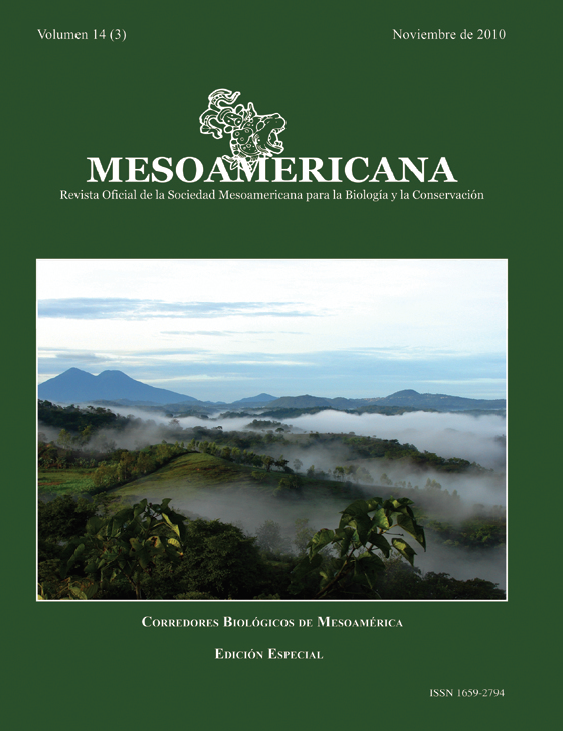

Adept management may help assure the capacity of agricultural lands to contribute to biodiversity conservation. However, we have limited understanding of how management of different elements within designated corridor areas influences resource use among wildlife and contributes to overall conservation value. This study explores how management of live fences within the Volcánica Central-Talamanca Biological Corridor influences bird diversity and resource use. Bird species visiting live fences were recorded for three management treatments: multistrata live fences (dominated by mature, un-pruned trees); simple live fences (dominated by immature trees, pruned regularly), and control (post-and-wire fences). Seventy-four resident and migratory bird species were observed across treatments. Species richness was highest in multistrata fences (28.67 ± 3.98, mean ± 1 SD) intermediate in simple fences (16.20 ± 2.59), and lowest in post-wirefences (9.00 ± 2.94). However, ?90% of migratory species and species that frequent forest patches and agroforestry plantations at the study site were observed in multistrata fences. In-fence behavior (perching, foraging, reproductive activity) was recorded for individuals actively using fences. Correspondence analysis showed that both foraging and reproductive behavior were more frequently associated with multistrata fences than simple or control fences. Live fences appear to provide important resources within a biological corridor. However, management that favors height and structural complexity, which characterize multistrata fences, enhance corridor use among a diverse range of bird species and may provide greater support for foraging and reproductive activities. Structurally complex live fences are expected to be particularly important for migrants and species that frequent forest and agroforestry patches.